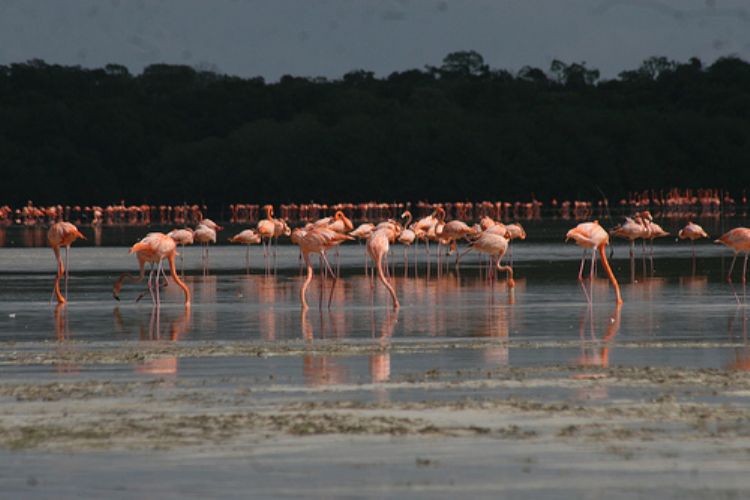
In the year 1531, as told by the historical documents, to...

The oldest remains of human settlements within the territories of the current state of Colima, go as far back as the XV century before our time, nothing less than 3,500 years into the past. Through time, new tribes and ethnic groups gradually inhabited this lands, until the year 100 of our time sees the establishment of the Comala compound, by a culture credited with the splendor era of ceramic arts in the state. A token of such an expression of international renown is the piece known as Los Perros Sebados, or "The Fat Dogs".
Other compounds followed, named Armeria, Colima, and Chanal. To this day, the archeological sites of Chanal and La Campana are the ones which have been explored in most depth and detail, and date back to a period between VI and XV centuries of our time. With a clear influence coming from nothing else and further away than Mesopotamia, cities display pyramidal temples, avenues and sidewalks, as well as representations of Tlaloc, god of rain, and of Huehueteotl, the ancient god of fire.
The first Spanish expedition touches Colima's soil in the year 1522, led by Juan Rodriguez de La Fuerte, who was in fact defeated by the natives in the region of Tecoman. The following expedition, with Gonzalo Sandoval in charge in 1523, managed to establish one of the oldest Spanish villas in the province of the Nueva España, under the direct supervision of Hernan Cortez himself.
During the conquest, the state's mayoralty had to face the European pirate ravages, docking at the bay of Santiago Buenaesperanza, today known as the port of Manzanillo.
Despite being a mayoralty, directly linked to the province Viceroyalty since the beginning, it was turned into a sub-delegation of the Guadalajara entity by the end of the XVIII century, as well as its Church, which by then also depended upon the diocese of Guadalajara
From March to November of 1792, Colima had don Miguel Hidalgo as its parish priest. As he pronounced his now famous "Cry of Dolores" which ignited the Mexican war for independence, the state's society all, including those with mixed-raced, of indigenous descent, or Mexican born of Spanish descent, embarked in the fight for a sovereign nation with no hesitation.
T
he seat for great battles between insurgent rebels and Realists defending the Spanish Crown, the city of Colima witnessed the determined struggle of great local leaders, like Jose Antoniom Torres, Rafael Arteaga, Pedro and Manuel Regalado, Jose Calixto Martinez, Miguel Gallaga, priest Jose Antonio Diaz, and Ignacio Sandoval, among many others.
Once independence was achieved, the newly formed federation granted Colima the rank of Federal Territory in 1824. Not for long though, as it lost its autonomy yet again in 1837, as it was turned into a district of the Michoacan state.
So it is not until 1857, as the new Mexican Constitution is promulgated, that Colima obtains the rank of State of the Federation, sovereign and independent, and general Manuel Alvarez is posted as the first governor.
During the Porfiriato dictatorship, Colima benefits, just as the greatest part of the nation, from the railroad expansion, and locally by a line connecting the port of Manzanillo to the city of Colima, and another line connecting this city with Tuxpan.
Now, during the Mexican Revolution war, the coastal state avoided any direct armed confrontation, except for the battles for regional power fought by the local parties.
As it turned out, the state of Colima still had to endure its hardest battle, La Guerra de Los Cristeros, this term referring to the supporters of a rebellion against secular laws introduced after the Revolution, and which initiated with the approval of the Worship Law in the year 1926, which plainly consisted on a direct and even armed attack of the central government against the catholic church and all its properties, including schools, hospitals and orphanages.

In the year 1531, as told by the historical documents, to...

In the field of international trade, Mexico is a country ...

Several foreign and domestic agencies such as the Interna...

The Mexican State fulfills its main goal by guaranteeing ...

Celestun has been considered a Biosphere Reserve since 19...


The system of haciendas was the main economic organizatio...